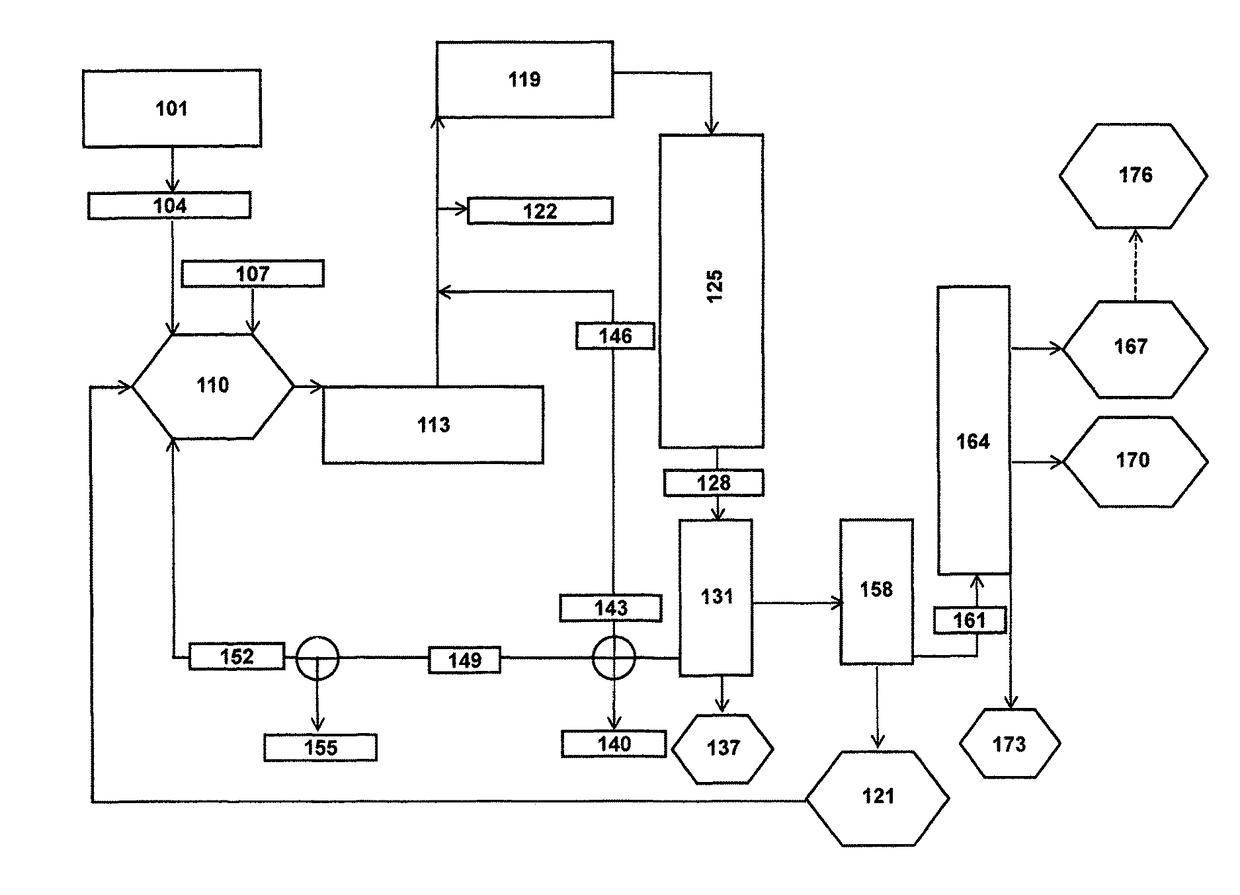These dissimilarities
pose a problem, as any distributed (on-site) production of liquid fuels from these sources must be extremely flexible and capable of internal
processing adjustment to meet the differing compositions presented.
They are stranded for one or more of the following reasons:1. The reserve is too remote from the market for
natural gas and natural gas liquids (NGL's), making construction of a major pipeline prohibitively expensive.2. The reserve is in a region where the demand for gas is saturated, and the cost of exporting gas beyond its production region is excessive.3. The reserve has a limited production lifetime.4. In addition to CH4, the resource contains significant concentrations of other gas-phase C2-C4 hydrocarbons, C5+ hydrocarbons (NGLs),
inert gases and / or contaminants that make the resource unsuitable for introduction into a
gas pipeline.
These quality standards vary from pipeline to pipeline and are usually a function of a pipeline
system's design, its downstream interconnecting pipelines, and its customer base.5. The current market for NGLs is poor due to overabundance in many regions (Cantrell et al, October 2013).6. Gas can be an uneconomical by-product of
oil production.
Since it is not cost-effective to utilize this natural gas due to low gas volumes (typically about 0.1-5.0 million scf / day / well) and since this resource usually declines in volume in a few years, this associated gas is normally flared (burned) during the
oil production process (PetroWiki, 2014).
This flaring wastes a potentially valuable resource and produces high levels of
greenhouse and criteria
pollutant emissions.
The selection of technologies for the distributed conversion of
gaseous hydrocarbon resources to fuels is not straightforward, especially in view of the fact that the conversion processes may need to be operated at remote locations and / or at locations where limited infrastructure is available.
Each of these methods requires substantial capital to deploy.
These impurities are sent into the syngas generation plant and then follow through to the other unit processes, reducing efficiency and resulting in higher capital costs to accommodate these gas volumes.
One additional challenge of the current technologies for
oxygen generation is the requirement for compression of the
oxygen, requiring compression capital and operating expense (energy) to compress the
oxygen gas up to plant pressure for input into the
system.
There are some disadvantages with the use of PDX for smaller distributed gas-to-liquids systems: 1) any PDX process requires oxygen making it necessary to co-locate an oxygen production plant next to the distributed GTL plant and, depending upon the oxygen generation method, may contain concentrations of other gases such as
nitrogen and
argon; 2) additional unit operations are required to increase the H2 / CO to the appropriate stoichiometric ratios of 1.8-2.4 and; 3)
nitrogen present in the feedstock or present in the oxygen
stream produces NH3 and HCN contaminants in the syngas
stream, which are potential catalyst poisons.
There are several disadvantages when using ATR in a distributed plant: 1) the catalyst is costly and may have a limited lifetime; 2) the catalytic reformers are large and expensive; 3) an entire co-located oxygen production plant is needed which adds significant
capital cost and can more than double the plant energy requirements and; 4) since the H2 / CO ratio is too high, additional unit processes are required for the separation of the
hydrogen as required to decrease the H2 / CO to the required stoichiometric ratio.
Hydrocracking and other upgrading processes add significant expense and complexity to a
plant design.
However for smaller, distributed applications that require lower volumes of feedstock for gas-to-liquids (GTL), and other plants that function at smaller scale (generally less than approximately 10,000 barrels per day), plant designs that incorporate traditional F-T processes that include hydrocracking and other expensive upgrading processes may not be economically viable.
However, these references require that the CO2 be separated from the tailgas in an expensive and cumbersome process.
However, none of the related art uses recycled C1-C5 hydrocarbons to maintain an optimum syngas H2 / CO ratio of 1.8-2.4.
From the discussion above, it is evident that most distributed natural gas production sites cannot be economically served by current technologies.
 Login to View More
Login to View More  Login to View More
Login to View More 


